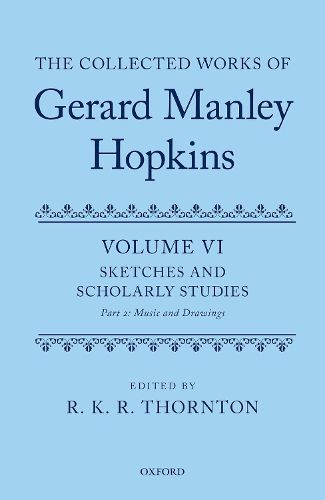Readings Newsletter
Become a Readings Member to make your shopping experience even easier.
Sign in or sign up for free!
You’re not far away from qualifying for FREE standard shipping within Australia
You’ve qualified for FREE standard shipping within Australia
The cart is loading…






Sketches and Scholarly Studies: Part II, Musical Settings and Sketches brings together two crucial aspects of Gerard Manley Hopkins's insatiable drive to create: drawing, predominantly (but not exclusively) from the early part of his life, when he had ambitions to be a painter; and music, from the later part of his life, when he found in music suggestions of a new contact with the eternal. Hopkins grew up in a home that emphasized cultural and artistic accomplishments; his brothers Arthur and Everard were both professional illustrators, and his sister Grace was an accomplished pianist. Limited as the corpus of Hopkins's drawings is--four small sketchbooks and a handful of loose drawings--there is certainly evidence to suggest that he might have been a successful illustrator adhering to Ruskinian principles. This edition reproduces the surviving drawings, with a full introduction and annotations placing them in the context of Hopkins's creative life. His musical compositions are presented in both manuscript facsimiles and new transcriptions, revealing his exploration, in a new mode, of ideas of rhythm, harmony, and counterpoint.
$9.00 standard shipping within Australia
FREE standard shipping within Australia for orders over $100.00
Express & International shipping calculated at checkout
Sketches and Scholarly Studies: Part II, Musical Settings and Sketches brings together two crucial aspects of Gerard Manley Hopkins's insatiable drive to create: drawing, predominantly (but not exclusively) from the early part of his life, when he had ambitions to be a painter; and music, from the later part of his life, when he found in music suggestions of a new contact with the eternal. Hopkins grew up in a home that emphasized cultural and artistic accomplishments; his brothers Arthur and Everard were both professional illustrators, and his sister Grace was an accomplished pianist. Limited as the corpus of Hopkins's drawings is--four small sketchbooks and a handful of loose drawings--there is certainly evidence to suggest that he might have been a successful illustrator adhering to Ruskinian principles. This edition reproduces the surviving drawings, with a full introduction and annotations placing them in the context of Hopkins's creative life. His musical compositions are presented in both manuscript facsimiles and new transcriptions, revealing his exploration, in a new mode, of ideas of rhythm, harmony, and counterpoint.